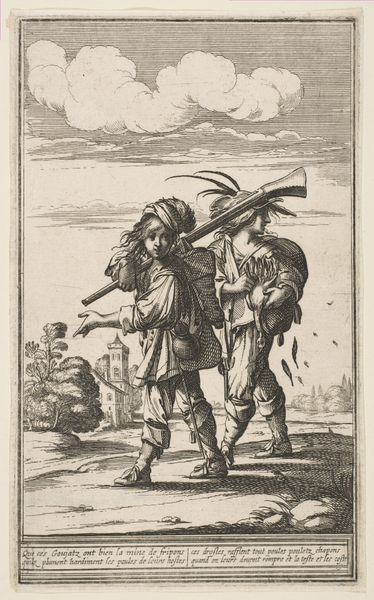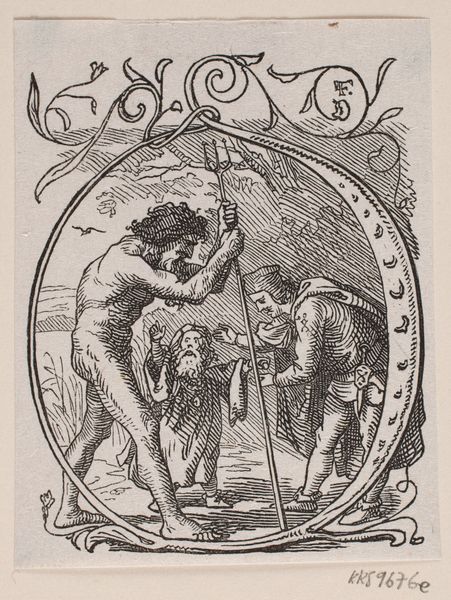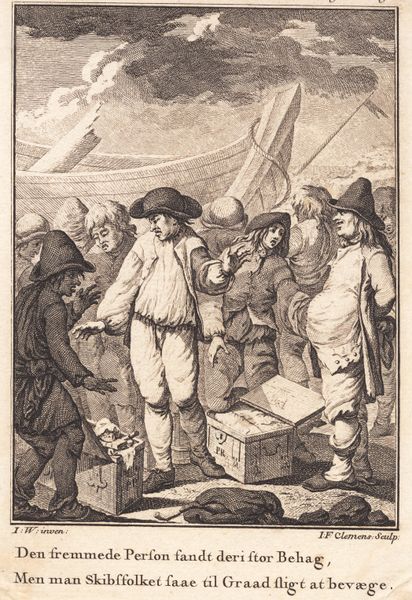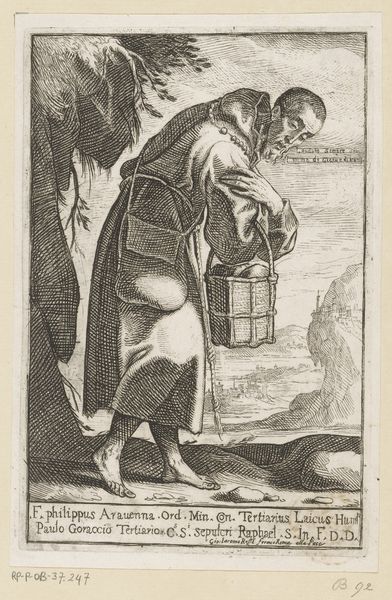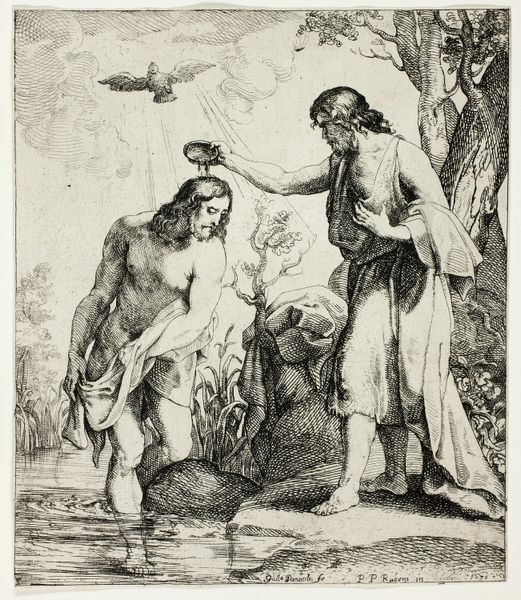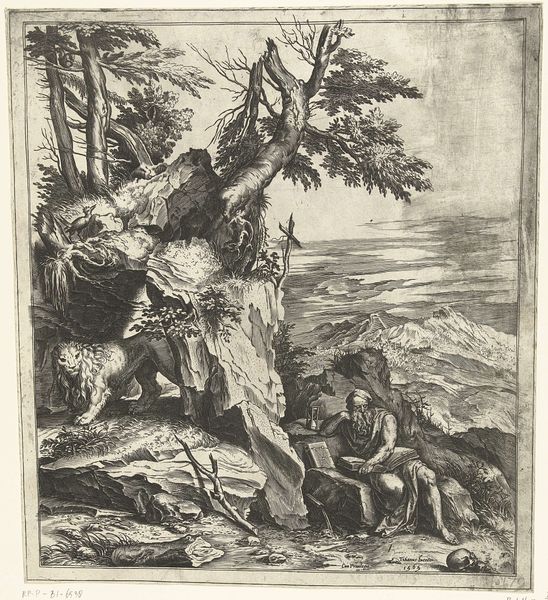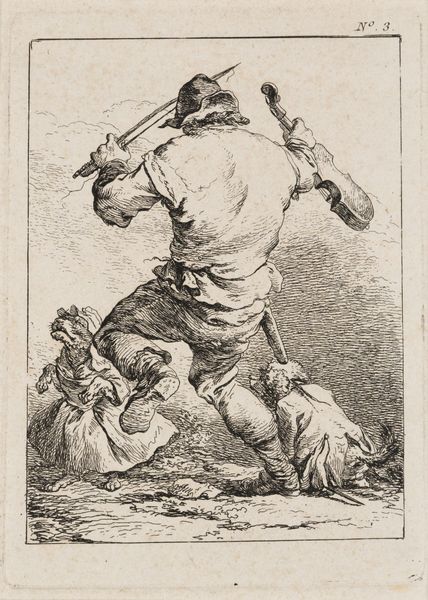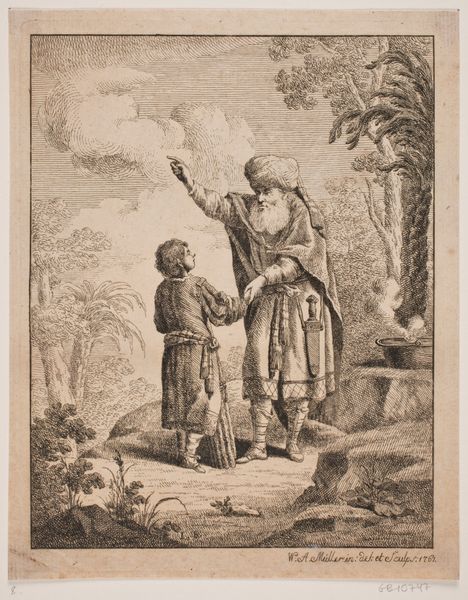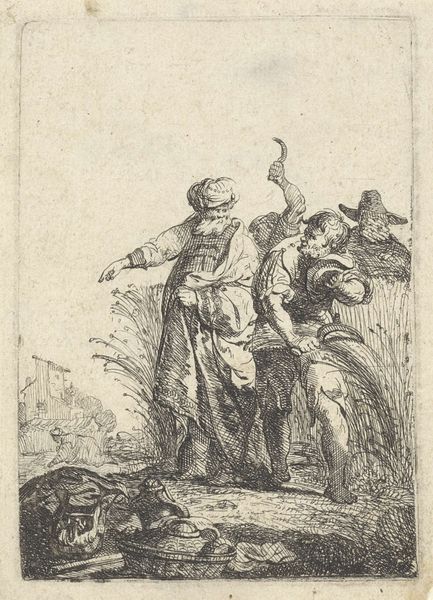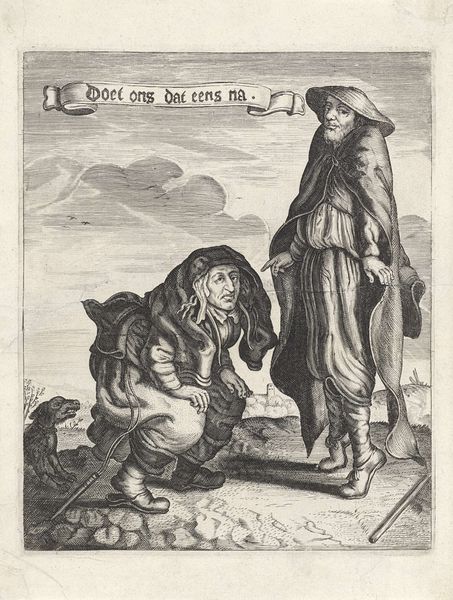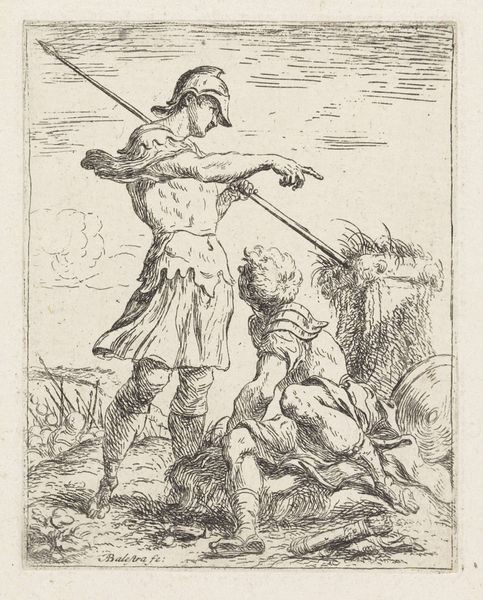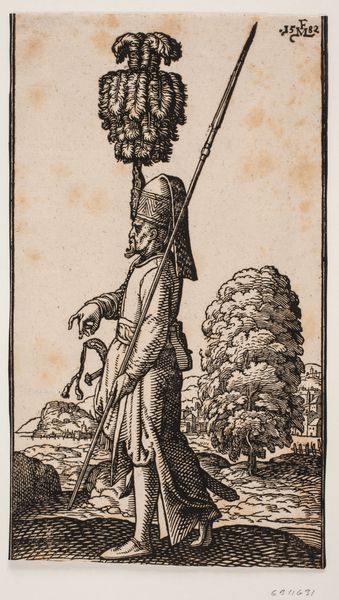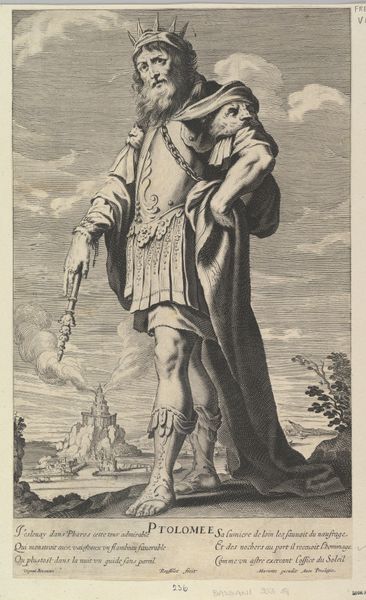
drawing, print, woodcut
#
drawing
# print
#
woodcut
#
genre-painting
#
northern-renaissance
Dimensions: 95 mm (height) x 81 mm (width) (bladmaal)
Andreas Flinch created this small etching, "The Smithy in Boeslumby," sometime in the mid-19th century. Etching, of course, is a printmaking process. Here, Flinch would have coated a metal plate with a waxy, acid-resistant substance, drawn his image into it, and then bathed the plate in acid to eat away the exposed lines. Look closely, and you'll see how the lines vary in thickness and depth, this gives the print its rich texture. Notice also that the whole image is built from a network of hatching and cross-hatching; this is how Flinch creates tone and shadow. The subject matter – a blacksmith at work – is interesting. It shows a craftsman in a moment of intense activity, using fire, tools, and skill. In choosing this subject, Flinch elevates labor to the level of fine art. In doing so, he invites us to consider the social significance of work. It also invites us to question our assumptions about what's "high" and "low" in art, challenging those distinctions between fine art and craft.
Comments
No comments
Be the first to comment and join the conversation on the ultimate creative platform.
